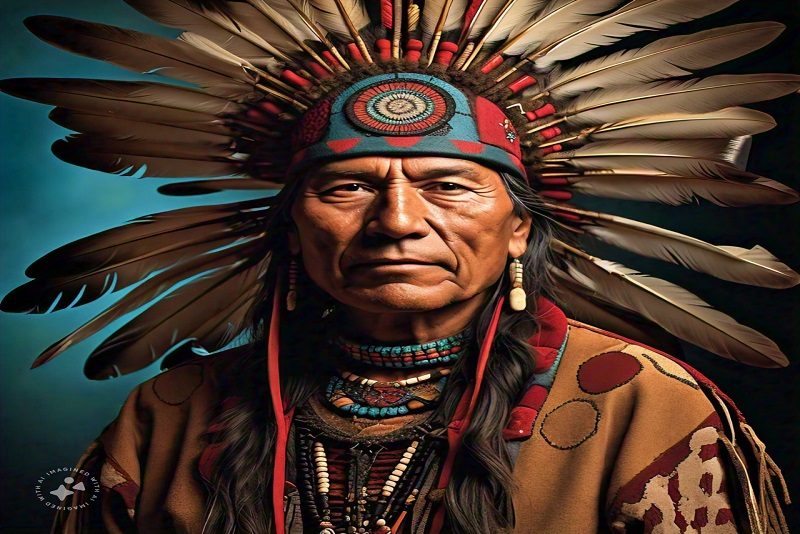Introduction: Who Was Allan Haozous?
Allen Howes, also known as Allen Houser, was a Native American spearman artist known for his profound contributions to contemporary Native American art. Born to Chiricahua Apache parents in 1914, he underwent significant cultural changes and became an influential figure in the art world. His work intricately weaves together elements of his Apache heritage and modernist influences, establishing a unique artistic voice that still resonates today. Haozous’s ability to mix and match with growth transformed Native American art as well as provided a stage for future generations of Native artists.
Early Life and Apache Heritage: The Roots of Allan Haozous’s Legacy
The Impact of Apache Culture and Family Heritage
Allen Howes’ early life was deeply intertwined with his Apache heritage, which shaped his personality and artistic vision. Brought into the world after the release of his relatives from captivity, he was part of the first generation of his family to experience freedom. His father, Sam Howes, was among the Apache who faced limited movement and imprisonment by the American government in the late nineteenth century. This history of struggle and resilience played an important part in Allen’s artistic story, allowing him to express his cultural roots through his work, often portraying themes of individuality, spirituality, and connection to the land.
Early Education and Passion for Art
Hause’s artistic journey began at the Santa Fe Indian School, where he studied under distinguished teachers who recognized his talent. His education allowed him to investigate different artistic styles and mediums, creating a unique blend of traditional Apache themes and current artistic techniques. This seminal experience ignited a lifelong passion for art, as he sought to reclassify Native American representation in the contemporary art scene.
Breaking Boundaries in Native American Art
A New Voice in Native American Sculpture
Allen Howes emerged as a great sculptor, known for his creative use of materials such as bronze, stone and wood. His sculptures often depict Apache figures, animals, and elements of Apache folklore, presented with a modern twist. Emphasizing texture and abstraction, Houses carved out a space that featured the depth and complexity of Native American narratives. His work is admired for its ability to convey cultural stories while engaging contemporary art audiences.
Blending Traditional Themes with Modern Abstraction
Howes’ approach to art was defined by a seamless blend of traditional Apache themes and contemporary abstraction. He expertly combined contemporary artistic practices with his cultural background, creating a visual language that was innovative and respectful of his heritage. This unique approach allowed him to challenge stereotypes and misconceptions about Native American art, and prepared future artists to express their cultural identities in diverse ways.
Major Works and International Recognition
Notable Sculptures and Global Exhibits
Allen Houses produced a number of important works that received international acclaim. Some of his most notable sculptures include “The Indian,” a powerful representation of Native character, and “Champion,” which captures the spirit and resilience of Apache warriors. His pieces are housed in prominent institutions such as the Smithsonian American Art Museum and the Hard Museum, demonstrating his influence on the art world. Additionally, his work has been displayed in public spaces, allowing a wider audience to engage with and appreciate Native American art.
Awards and Honors, Including the National Medal of Arts
Houses has received numerous accolades throughout his career, reflecting his extraordinary contributions to the art community. In 1992, he was awarded the Public Award for Arts, one of America’s highest honors for artistic achievement. The recognition marked her work in promoting Native American art and culture, and highlighted her influence in helping mainstream audiences value the importance of Native art.
The Rise of Contemporary Native American Artists
Allen Houses seminal work laid the foundation for the emergence and flourishing of contemporary Native American artists. By examining traditional narratives and adopting the principles of modernism, he inspired another era of artists to investigate their cultural identities and share their stories through different artistic forms. His legacy continues today to promote cultural pride and artistic freedom among local artists.
The Haozous Family Legacy in Art
House’s influence extended throughout his life through his family, many of whom were accomplished artists. This family association ensures that its artistic spirit lives on, fostering a climate of innovation and cultural expression. The Hawes family’s contribution to art honors Allen’s heritage, highlighting the importance of indigenous voices in the contemporary art scene.
The Lasting Legacy of Allan Haozous in Native American Culture
Allen Howes’ influence on Native American culture is profound. They served as cultural ambassadors, promoting indigenous art to the world stage and amplifying indigenous narratives. His work reflects the richness of Apache culture as well as the broader struggles and achievements of indigenous communities. As a result, his art remains an important part of the conversation surrounding Native American character and representation.
Conclusion: Why Allan Haozous’s Art Continues to Inspire?
Alan Howes’ contributions to art, culture and heritage are invaluable. His ability to weave traditional and contemporary elements together creates a believable story that resonates with audiences around the world. By breaking boundaries and reclassifying Native American art, Hauss has created an enduring legacy that continues to inspire artists and art lovers alike. His work serves as a symbol of the power of art to transcend cultural barriers and promote understanding and appreciation of diverse identities.

Leave a Reply